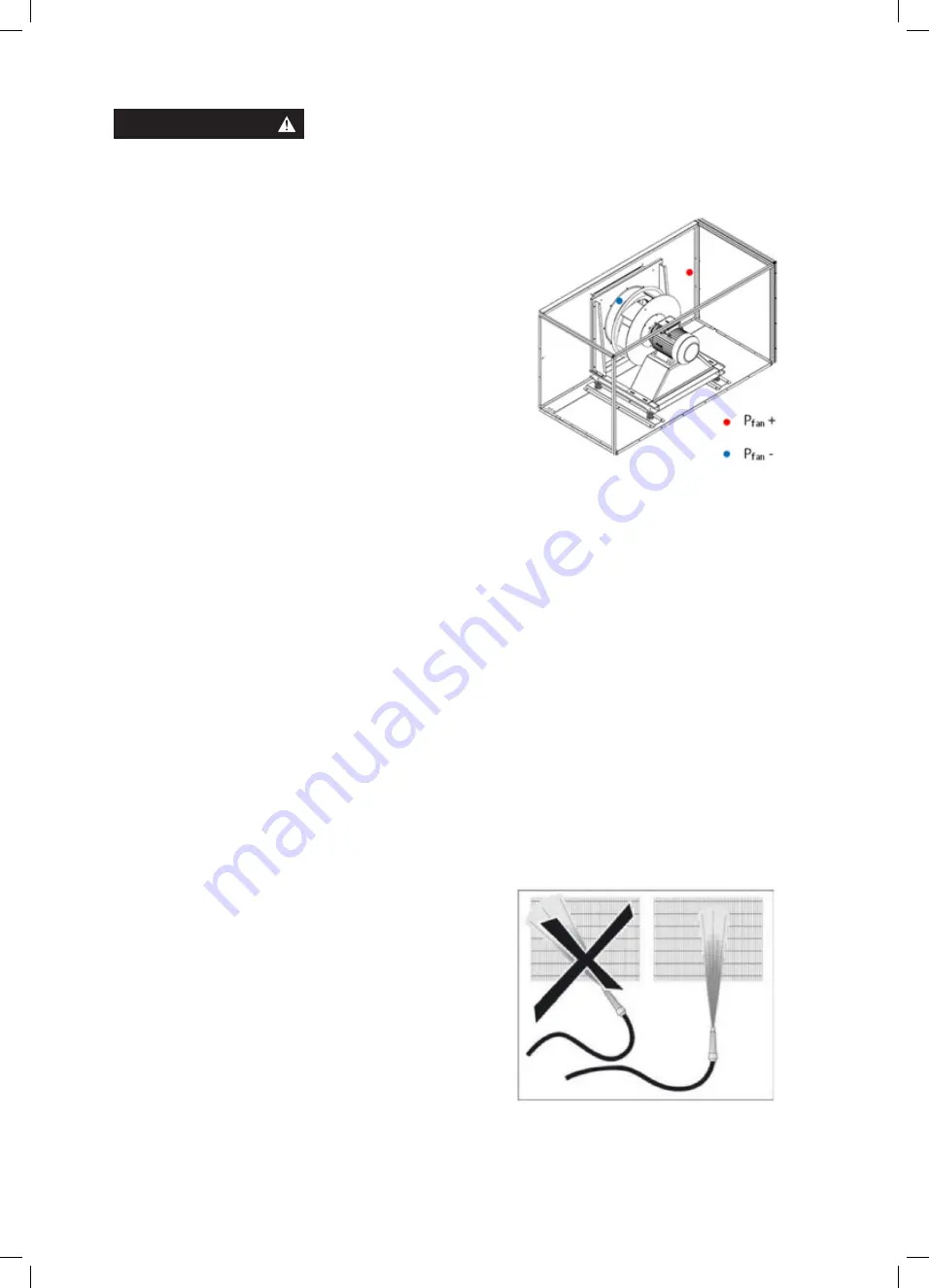
38
If there is even the slightest movement on the fan, never open the fan door!
Fans are components that cannot be taken out of the unit due to their nature (Except for units with sliding fan structure
produced on special request). For this reason, no intervention should be made by the user, except for general controls
about the service.
•
Open the fan module door.
•
Check the fans for dust accumulation, corrosion, or damage.
•
Turn the fan wheel by hand and check for any mechanical friction,
knocking, or clicking noise.
•
Check the tightness of the fasteners in general.
•
If it is Plug Fan, check the vibration wedges for any damage or
loosening.
•
If it is a plug fan, check if there is any laceration in the flexible
connections.
•
Check the hose connections at the pressure measurement
points.
5.3.4 Coil Maintenance and Cleaning
•
Because the working pressure of the heat exchanger is higher than atmospheric pressure, care should be taken
against any operation that may affect the sealing or cause structural damage (Damages that are generally found
at high temperatures and pressures and may cause internal fluid leakage or emission that could harm people /
the product).
•
All maintenance should be done when the heat exchanger is not operating. Internal fluid must be completely
drained, connections that will impair the tightness must not be loosened until the internal pressure reaches at-
mospheric pressure. The temperature of the product components should not be higher than 35 ° C or ambient
temperature.
•
Before starting the system, make sure that gaskets are placed on all heat exchanger connections.
•
The system should be vented regularly to prevent air from remaining in the cycle.
•
When the heat exchanger is disassembled for any reason, new gaskets must be used. This process will prevent
leaks from seals that become brittle over time due to dehydration.
•
The heat exchanger should never be left filled with fluid while it is not operating to avoid freezing problems.
•
Anti-freezing thermostats should be used.
•
It should be ensured that all parts of the system are clean and in the most suitable condition for working conditions.
Cleaning
•
Heat exchangers should be free of dirt and dust. Dirt/dust
accumulating on the surface will cause a loss of capacity by
forming a layer that will affect the heat transfer.
•
The surface of the heat exchanger should be checked for
dirt and dust and if necessary, cleaned with a soft brush,
compressed air, pressurized hot water, or a similar method.
•
Maintenance should be taken that the high air/water pressure
value used during cleaning does not cause damage / bending
on the coverslips.
•
The washing process should be done parallel to the coverslip
surface. Chemicals that can react with the materials used in
the product should be avoided. When necessary, suitable
chemicals that will not react with the material can be used.
DANGER











































